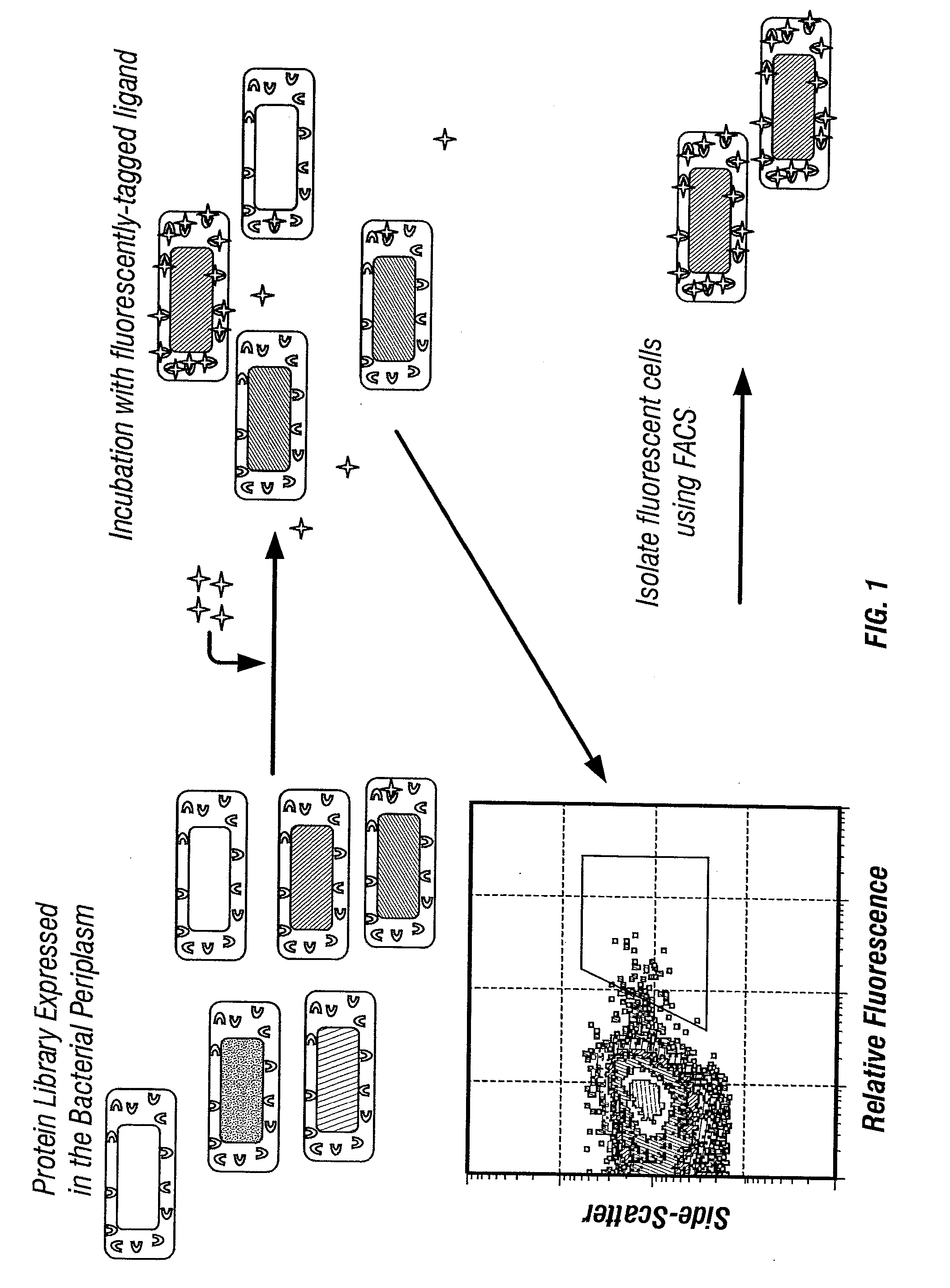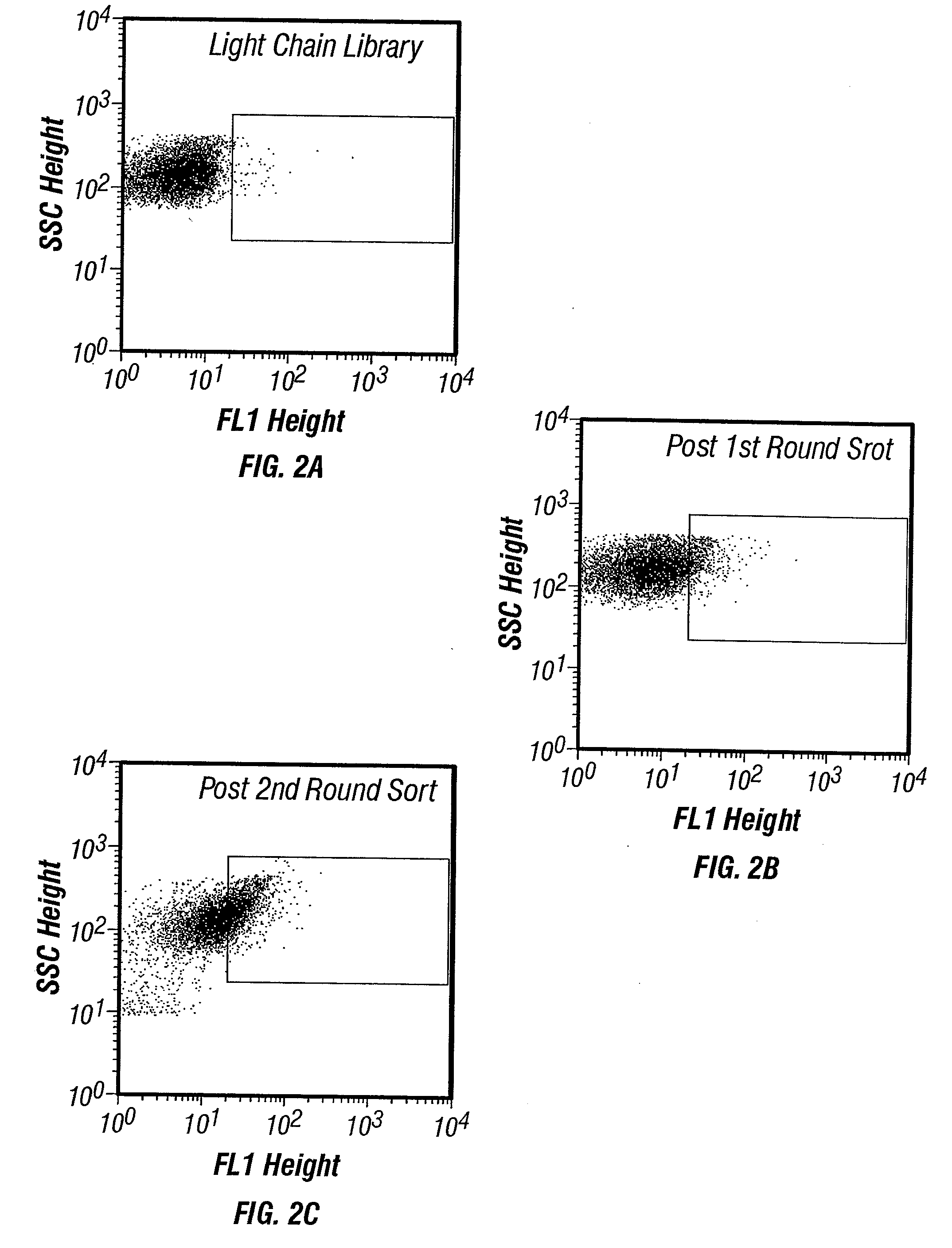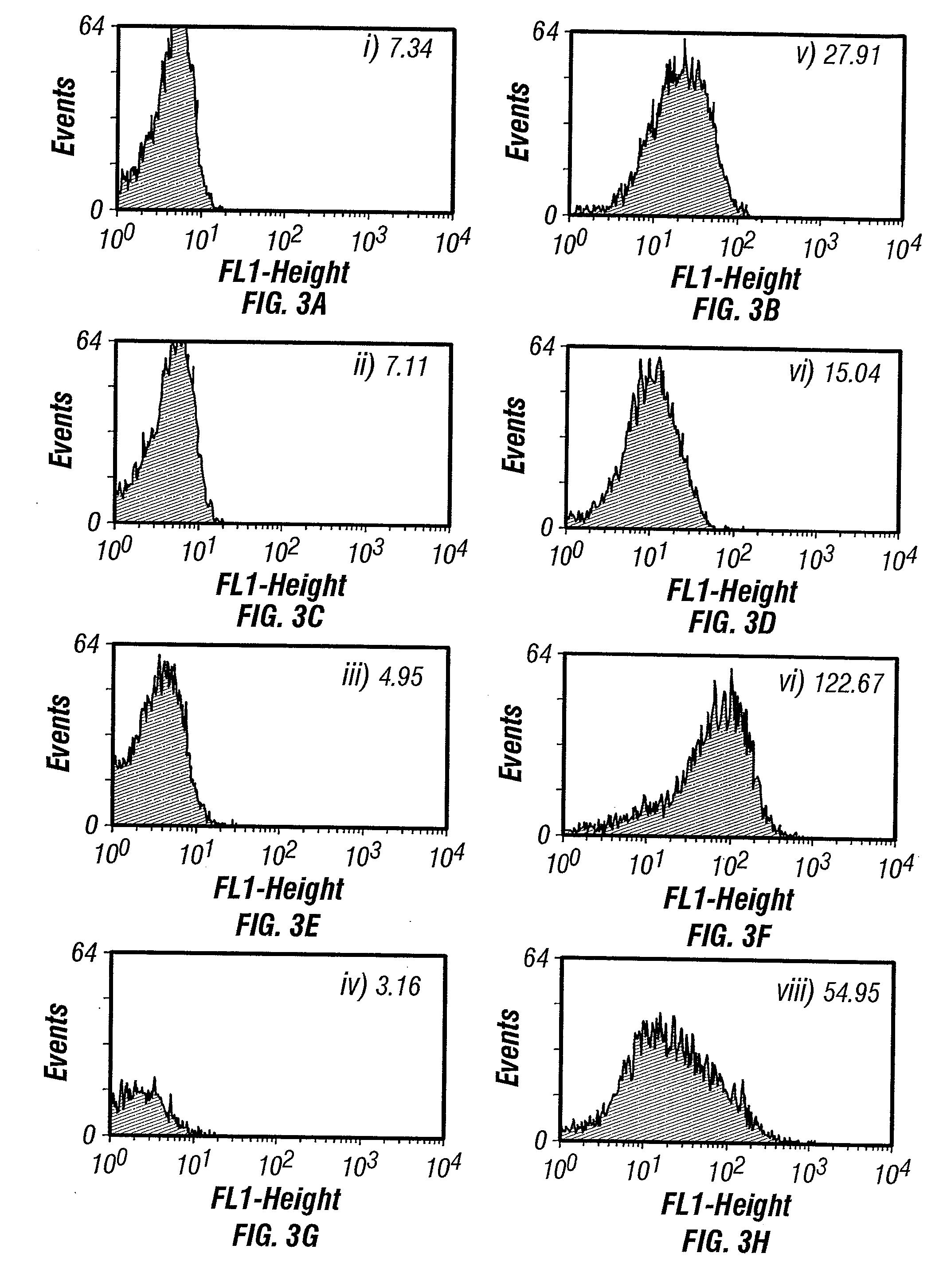Isolation of binding proteins with high affinity to ligands
a technology of binding proteins and ligands, applied in the field of protein engineering, can solve the problems of difficult preparation of clones isolated after several rounds of panning, difficult screening of large libraries consisting of tens of millions or billions of clones, and complex screening of phage-displayed libraries, etc., to facilitate diffusion into the periplasm
- Summary
- Abstract
- Description
- Claims
- Application Information
AI Technical Summary
Benefits of technology
Problems solved by technology
Method used
Image
Examples
example 1
Fluorescence Detection and Enrichment of Cells Expressing scFv Antibodies in the Periplasm
[0148] The 26-10 scFv antibody binds with high affinity to cardiac glycosides such as digoxin and digoxigenin (KD of the purified antibodies for digoxin and digoxigenin are 0.9±0.2×10−1 M−1 and 2.4±0.4×10−9 M−1, respectively, Chen et al., 1999). The 26-10 scFv and its variants have been used extensively as a model system to understand the effect of mutations in the CDRs and in the framework regions on hapten binding (Schilbach et al., 1992; Short et al., 1995; Daugherty et al., 1998, 2000; Chen et al., 1999). A derivative of the 26-10 scFv was expressed under the E. coli arabinose promoter and with the pelB leader peptide that allows secretion in the E. coli periplasm. The resulting plasmid vector (pBAD30pelB-Dig) was transformed in the ara E. coli strain LMG194 and protein synthesis was induced with 0.2% w / v arabinose. It was observed that upon incubation with 200 nM of digoxigenin-BODIPY™, c...
example 2
[0150] Short et. al., (1995) isolated a 26-10 mutant, designated A4-19, having an equilibrium dissociation constant (KD) for digoxin of 300 pM as measured by surface plasmon resonance. A4-19 contains 3 amino acid substitutions in heavy chain CDR1 (VH:T30→P, VH:D31→S and VH :M34→Y). It was examined whether mutants with increased binding affinity can be obtained by periplasmic expression / FACS screening even when starting with an antibody that already exhibits very tight binding. Three light chain CDR3 residues that make contact (VL:T91, VL:P96) or are in close proximity to (VL:V94) the digoxin hapten (Jeffrey.et al., 1993) were randomized using an NNS (S=G or C) strategy (Daugherty et al. 1998). A library of 2.5×106 transformants expressed in the periplasm via the pelB leader was generated and screened using two rounds of FACS (FIG. 2). In the first round of screening, cells labeled with 100 nM of the fluorescent probe were washed once with PBS and sorted ...
example 3
Maximizing the Fluorescence Signal
[0152] The fluorescence intensity of cells expressing scFv antibodies in soluble form in the periplasm was strongly dependent on the E. coli strain used and on the growth conditions. With the 26-10 antibody, the maximum fluorescence intensity was obtained when the cells were grown at 25° C. Growth at sub-physiological temperature has several beneficial effects. Expression of scFv at low temperature (i.e., 25° C.) facilitates the proper folding of the scFv both directly, by slowing the folding pathway and indirectly by decreasing plasmid copy number to reduce expression load. Indeed, direct expression of scFv at 37° C. generally yields little or no soluble protein (for example see Gough et al., 1999). Outer membrane composition is also altered at non-physiological temperatures resulting in increased permeability (Martinez et al., 1999). Rather dramatic differences among various E. coli strains were noticed. Among several strains tested, the highest ...
PUM
| Property | Measurement | Unit |
|---|---|---|
| molecular weight | aaaaa | aaaaa |
| molecular weight | aaaaa | aaaaa |
| molecular weight | aaaaa | aaaaa |
Abstract
Description
Claims
Application Information
 Login to View More
Login to View More - R&D
- Intellectual Property
- Life Sciences
- Materials
- Tech Scout
- Unparalleled Data Quality
- Higher Quality Content
- 60% Fewer Hallucinations
Browse by: Latest US Patents, China's latest patents, Technical Efficacy Thesaurus, Application Domain, Technology Topic, Popular Technical Reports.
© 2025 PatSnap. All rights reserved.Legal|Privacy policy|Modern Slavery Act Transparency Statement|Sitemap|About US| Contact US: help@patsnap.com



